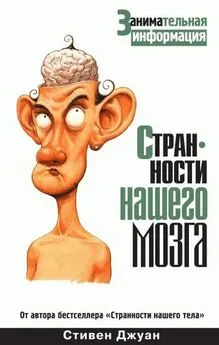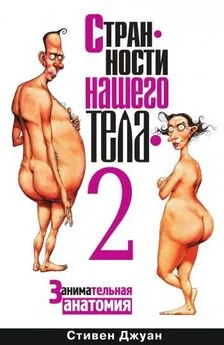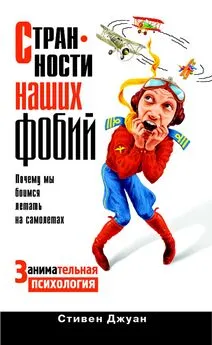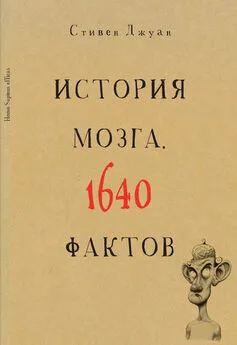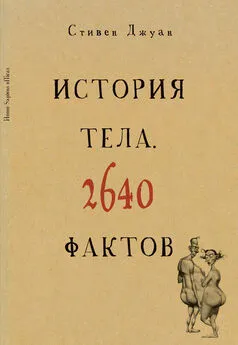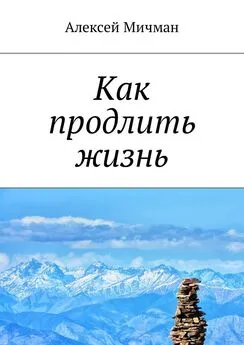Стивен Джуан - Могут ли поцелуи продлить жизнь?
- Название:Могут ли поцелуи продлить жизнь?
- Автор:
- Жанр:
- Издательство:Литагент «РИПОЛ»15e304c3-8310-102d-9ab1-2309c0a91052
- Год:2011
- Город:Москва
- ISBN:978-5-386-02692-9
- Рейтинг:
- Избранное:Добавить в избранное
-
Отзывы:
-
Ваша оценка:
Стивен Джуан - Могут ли поцелуи продлить жизнь? краткое содержание
Доктор Стивен Джуан – ученый-антрополог, автор мировых бестселлеров «Странности нашего тела» и «Странности нашего мозга». Родился и вырос в США, сейчас живет в Австралии, где преподает в университете и выступает на радио и телевидении. В новой книге доктор Джуан продолжает искать объяснение самым странным странностям нашей жизни.
Можно ли доверять детектору лжи?
Почему беременных тошнит по утрам?
Почему одних людей комары кусают чаще других?
Можно ли клонировать неандертальца?
Можно ли определить характер человека по его ушам?
Ответы на эти и другие вопросы вы найдете в этой книге.
Могут ли поцелуи продлить жизнь? - читать онлайн бесплатно ознакомительный отрывок
Интервал:
Закладка:
386
A. Ward-Smith, ‘Energy conversion strategies during 100 m sprinting”, Journal of Sports Science, 2001, vol. 19, no. 9, pp. 701–710.
387
Dr William Sellars is from the Department of Human Sciences at Loughborough University in the UK.
388
W. Sellars, G. Cain, W. Wang and R. Crompton, ‘Stride lengths, speed and energy costs in walking of Australopithecus afraensis: Using evolutionary robotics to predict locomotion of early human ancestors’, Journal of the Royal Society Interface, 2005, vol. 2, pp. 431–441.
389
S. Juan, ‘Is there a speed or stride where running is more effi cient?’, The Register, 22 September 2006.
390
J. Varasdi, Myth Information, 1996, p. 238.
391
Dr A. Bazile, N. Bissada, R. Nair and B. Siegel are from the Department of Periodontics at Case Western Reserve University in Cleveland, Ohio.
392
A. Bazile et al.. Periodontal assessment of patients undergoing angioplasty for treatment of coronary artery disease’, Journal of Periodontology, 2002, vol. 73, no. 6, pp. 631–636.
393
Dr Barbara Taylor is head of periodontics at the Sydney Dental Hospital.
394
B. Taylor, G. Toiler, H. Carey, M. Morel-Kopp, S. Philcox, T. Carter, M. Elliott, A. Kull, C. Ward and K. Schenck, ‘Full mouth tooth extraction lowers systemic infl ammatory and thrombotic markers of cardiovascular risk’, Journal of Dental Research, 2006, vol. 85, no. 1, pp. 74–78.
395
Dr Mark Herzberg is a professor of preventive sciences at the University of Minnesota in Minneapolis.
396
R. Smith, ‘Can fl ossing prevent a heart attack?’, Health, May 1998, p. 136.
397
S. Juan, ‘Can fl ossing your teeth prevent a heart attack?’, The Register, 29 September 2006.
398
Dr Holly Muggleston is from the School of Health and Applied Sciences at Southern Cross University in New South Wales.
399
Personal communication, 10 November 2006.
400
S. Juan, ‘Will sweets really rot your teeth?’, The Register, 24 November 2006.
401
Dr Richard Jonas is from the Children’s National Heart Institute in Washington, DC.
402
J. Varasdi, Myth Information, pp. 123–124.
403
J. Varasdi, Myth Information, pp. 123–124.
404
E. Widmaier, Why Geese Don’t Get Obese (And We Do): How Evolution’s Strategies for Survival Aff ect Our Everyday Lives, W.H. Freeman, San Francisco, 1998, p. 178.
405
Drs A. Pelliccia, B. Maron, A. Spataro, M. Proschan and P. Spirito are from the Department of Medicine at the Comitato Olimpico Nazionale Italiano in Rome.
406
A. Pelliccia et al., ‘The upper limit of physiologic cardiac hypertrophy in highly trained elite athletes’, New England Journal of Medicine, 1991, vol. 324, no. 25, pp. 1812–1813.
407
Dr Alfred Goldberg is a professor of cell biology at Harvard Medical School.
408
J. Shaw, ‘The deadliest sin’, Harvard Magazine, March-April 2004, pp. 36–43, 98–99.
409
C. Petit, ‘What causes arteries to harden’, San Francisco Chronicle, 17 January 1995, p. 2.
410
National Heart Lung and Blood Institute, What is Peripheral Arterial Disease? US Department of Health and Human Services, Washington, DC, 2 January 2007.
411
A. Ciocco, ‘On the interdependence of the length of life of husband and wife’, Human Biology, 1941, vol. 13, no. 4, pp. 505–525.
412
W. Corliss, Biological Anomalies II, Sourcebook Project, Glen Arm, Maryland, 1993, pp. 250–251.
413
M. Higgins, J. Keller, F. Moore, L. Ostrander, H. Metzner and L. Stock, ‘Studies of blood pressure in Tecumseh, Michigan. I. Blood pressure in young people and its relationship to personal and familial characteristics and complications of pregnancy in mothers’, American Journal of Epidemiology, 1980, vol. 11, no. 2, pp. 142–145.
414
S. Juan, ‘Is heart rate correlated with birth order?’, The Register, 7 July 2006.
415
Dr Sally Edwards is the CEO of Heart Zones USA of Sacramento, California.
416
Personal communication, 10 December 2006.
417
S. Juan, ‘How does the heart diff er from other mechanical pumps?’, The Register, 23 December 2006.
418
M. Goldwyn, How a Fly Walks Upside Down… and Other Curious Facts, Wings, Atlanta, 1995, p. 40.
419
S. Juan, ‘What makes a wound stop bleeding?’, The Register, 26 June 2006.
420
Fast Facts, National Hemophilia Foundation, New York, 25 May 2006.
421
J. Varasdi, Myth Information, p. 125.
422
S. Juan, ‘What happened to hemophiliacs before blood supplies were safe?’, The Register, 6 June 2006.
423
Drs K. Kasirajan, R. Milner and E. Chaikof are from the School of Medicine at Emory University in Atlanta, Georgia.
424
K. Kasirajan et al., ‘Combination therapies for deep venous thrombosis’, Seminars in Vascular Surgery, 2006, vol. 19, no. 2, pp. 116–121.
425
S.Juan, ‘What is deep vein thrombosis?’, The Register, 14 July 2006.
426
American Red Cross, New England Region, Frequently
Asked Questions, Boston, 2 August 2006.
427
S.Juan, ‘What conditions disqualify you from donating blood?’, The Register, 25 August 2006.
428
World Health Organization, Tuberculosis Fact Sheet, Geneva, March 2006.
429
Drs G.A. Lammie, R. Hewlett, J. Shoeman and P. Donald are from the Department of Pathology at Cardiff University in Wales.
430
G. Lammie et al., ‘Tuberculosis encephalopathy: A reappraisal’, Acta Neuropathologica (Berlin), 2007, vol. 113, no. 3, pp. 227–234, Epub 14 December 2006.
431
J. Varasdi, Myth Information, 1996, p. 246.
432
S. Juan, ‘Whatever happened to tuberculosis?’, The Register, 3 February 2007.
433
Dr Peter Osin is from the Royal Marsden Hospital in London.
434
‘Why the fat lady sings – there may be a medical reason opera singers tend to be heavy’, Evening Standard (London), 28 October 2005.
435
Drs C.W Thorpe, S. Cala, J. Chapman and P. Davis are from the National Voice Centre at the University of Sydney.
436
C. Thorpe et al., ‘Patterns of breath support in projection of the singing voice’, Journal of Voice, 2001, vol. 15, no. 1, pp. 86—104.
437
P. Galek, ‘Size matters’, New Scientist, 15 June 2002, p. 63.
438
S. Juan, ‘Why are opera singers fat?’, The Register, 26 June 2006.
439
S. Juan, ‘Weighing in on opera singers’ physiques’, National Post, 2 October 2006, pp. 1–2.
440
Centres for Disease Control and Prevention, Tips for Preventing Heat-Related Illness, Atlanta, 25 July 2006.
441
S. Juan, ‘What fluids should you drink when it’s hot?’, The Register, 18 August 2006.
442
Dr Andrew Lloyd is an infectious disease physician in Sydney.
443
Personal communication, 22 July 2006.
444
Dr Holly Muggleston is from the School of Health and Applied Sciences at Southern Cross University in New South Wales.
445
Personal communication, 24 July 2006.
446
S.Juan, ‘Do you feed a cold and starve a fever?’, The Register, 18 August 2006.
447
Dr Shawn Somerset is from the School of Public Health at Griffi th University in Brisbane, Queensland.
448
Personal communication, 9 August 2006.
449
S.Juan, ‘Will eating spinach make me strong?’, The Register, 18 August 2006.
450
S. Juan, ‘Why don’t we suffer from E. coli all the time?’, The Register, 8 September 2006.
451
H. Gleitman, A. Fridlund and D. Reisberg, Psychology (6th edn), WW Norton, New York, 2003.
452
S. Juan, ‘Why do you sometimes lose bowel function when scared?’, The Register, 20 October 2006.
453
S.Juan, ‘Great moments in human research’, The Register, 27 January 2007.
454
S. Juan, ‘Great moments in human research’, The Register, 3 February 2007.
455
American Liver Society, Gallstones, Nashville, Tennessee, 4 December 2006.
456
Dr Terry Bolin is a gastroenterologist at the Gut Foundation Institute at the Prince of Wales Hospital and the University of New South Wales in Sydney.
457
Personal communication, 4 December 2006.
458
American Liver Society, Gallstones, Nashville, Tennessee, 4 December 2006.
459
Dr Terry Bolin is a gastroenterologist at the Gut Foundation Institute at the Prince of Wales Hospital and the University of New South Wales in Sydney.
460
R. Kazmierski, ‘Primary adenocarcinoma of the gallbladder with intramural calcification”, American Journal of Surgery, 1951, vol. 82, pp. 248–250.
461
Drs Tsung-Chun Lee, K. Liu, 1. Lai and H. Wang are from the National Taiwan University Hospital in Taiwan.
462
T. Lee et al., ‘Diagnosing porcelain gallbladder”, American Journal of Medicine, 2005, vol. 118, no. 10, pp. 1171–1172.
463
S. Juan, ‘Are women who are forty, fat and fair more likely to get gallstones?’, The Register, 20 January 2006.
464
J. Arnold, ‘Scientifi c sleuths track the origins of tapeworms in humans’, ARS US Department of Agriculture, 23 October 2006, p. 1.
465
J. Varasdi, Myth Information, pp. 237–238.
Читать дальшеИнтервал:
Закладка:


